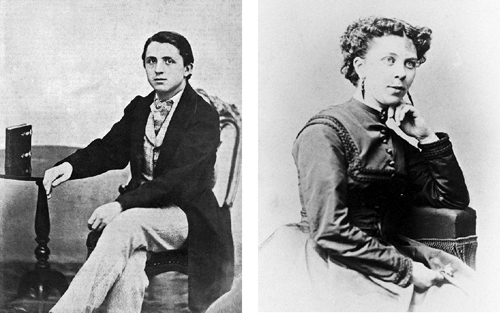
The Betrothed, Autumn 1862. Left: a photograph of Kuyper as a newly minted doctor of theology on the eve of his twenty-fifth birthday. His calm look belies his uncertain career prospects and the imminent religious crisis that would be triggered by a novel given him by fiancée Johanna Schaay (right). The daughter of a Rotterdam stockbroker, Jo was subject to Bram’s educational campaign to turn her from a child of trade into a proper professional lady.

The Kuyper Family, 1886. Kuyper, Jo, and their eight children sit for a family photo amidst the Doleantie and with twenty-year-old Jan Frederik (seated, right) about to depart for dental school in the USA. The daughters in the front row include (l. to r.) Henriëtte (b. 1870), Catharina (b. 1876), and Johanna (b. 1875). The sons in the back row include (l. to r.) Guillaume (b. 1878), Herman (b. 1864), “Willy” (b. 1882), and Abraham, Jr. (b. 1872).

Mentor and Adversary. Left: A bust of Kuyper’s great mentor, Guillaume Groen van Prinsterer. The refined and elite Groen had fought moderate-liberal educational policies in 1857; twenty years later Kuyper battled the more radical proposal of Joannes Kappeyne van de Coppello (right). The ensuing “school struggle” proved to be the making of Kuyper’s name and political party.
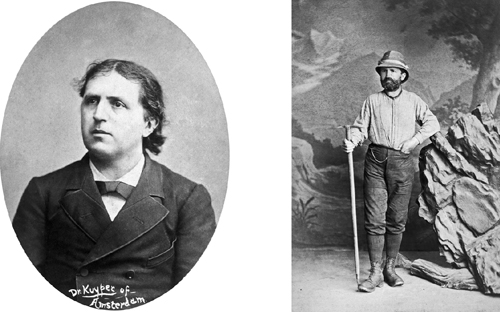
Two Modes of Rebirth. Left: Kuyper at the time of his encounter with evangelical holiness religion at Brighton, England, in the summer of 1875. This peak experience was soon followed by a deep plunge into physical and mental malaise. Kuyper repaired to the Alps for a long recuperation; the studio pose as mountain climber (right) suggests the spirit as well as the means of his recovery.
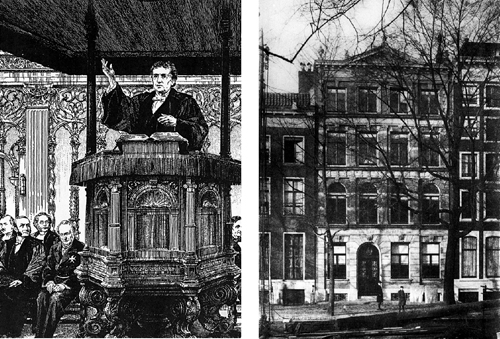
Beginning the Free University. An impression of Kuyper delivering his oration on “Sphere Sovereignty” in the august pulpit of the New Church, off Dam Square in Amsterdam. The Free University inaugurated by the speech was housed more modestly at Keizersgracht 162, in the city’s canal-ring district.

Helping Hands. Kuyper’s two principal collaborators in the founding of the Free University: Willem Hovy (left), Amsterdam brewer and leading financier of the institution; and Alexander F. de Savornin Lohman, a North Brabant jurist and founding professor of the university’s law faculty.

Two “Radicals” of 1886. Kuyper, a former Reformed pastor, led the party that “liberated” the New Church in Amsterdam via break-in, removing a panel from its council-room door (left). Ferdinand Domela Nieuwenhuis, a former Lutheran pastor and the country’s foremost socialist agitator, was jailed in 1886 for insurrectionary behavior. Kuyper’s Doleantie promised a better society by a return to the true faith; Domela Nieuwenhuis (right) envisioned a redeemed future by means of popular revolution. Their contrary ideas masked a common spirit detected — and denounced — by polite society.
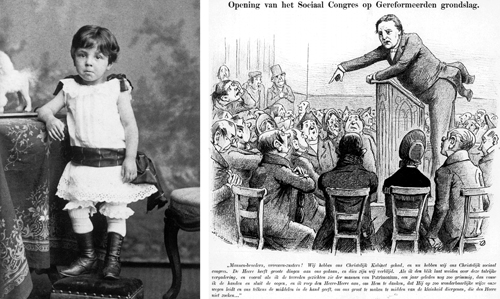
Glory and Grief in the Early 1890s. Right: a caricature of Kuyper delivering his oration on “Christianity and the Social Question” at the Christian Social Congress in November 1891. The provocative nature of the speech is evident from the varied responses on the faces in the crowd and Kuyper’s less-than-dignified posture at the podium. Left: a photo of Kuyper’s youngest son, Willy, who died the next summer at age nine.
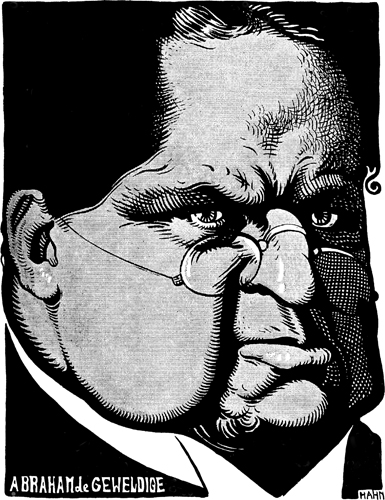
“Abraham de Geweldige.” This powerful caricature of Kuyper became one of his most famous images. “Geweldige” connotes tremendous, mighty, or imposing — the way royalty are designated “The Great” or “The Terrible.” The drawing was made in 1904 by Albert Hahn, one of the Netherlands’ ablest cartoonists in an age renowned for them. The son of a traditional craftsman, Hahn became an ardent socialist and began drawing for socialist newspapers and magazines early in the twentieth century. Kuyper was a favorite target, although this drawing also conveys respect.

Honored and Reviled. Two lasting, polar-opposite images of Kuyper, vividly depicted in Hahn cartoons. The first (left), originally entitled “In the Name of Christ,” dates from the railroad strike in 1903. Hahn satirically quotes from Kuyper’s 1891 speech on Christianity and the social crisis: “So you tame animals, so you suppress savages, but that’s not how you rule a people.” The second (right), captioned “How (Bilderdijk) was paid homage at the Amsterdam Concertgebouw,” marked Kuyper’s return to public life after his self-imposed exile upon the fall of his cabinet in 1905. It perfectly captures the master’s popular appeal among the party faithful.

“At a Solitary Post.” Another 1904 Hahn cartoon catches a dimension of Kuyper’s self-conception that was apparent to opponents and neutral observers, if not always to supporters. The figure evokes the Old Testament image of the Watcher on the Walls of Zion, maintaining vigil for Jerusalem through the dark and lonely night. Kuyper often cast world affairs as hovering on the edge of a precipice, with truth and right in peril, needing to be closely monitored by someone steadfast of vision and courage.

Kuyper as Prime Minister. Kuyper’s critics thought that he did not wear the symbols of office well, not having been born to “the better people.”

The Heirs, Part I. Herman Bavinck (right) succeeded Kuyper as professor of theology at the Free University and as party chairman for the 1905 elections. Half a generation younger than Kuyper, and more congenial in tone and temperament, Bavinck esteemed Kuyper as a visionary and organizational genius, but finally rebelled over Kuyper’s refusal to hand on leadership to men of fresher vision and energy. Theodor Heemskerk (left) was the leading politician of the younger cohort. Son of a traditional Conservative political leader, he helped Kuyper at some critical career passages, only to earn his wrath by assuming the prime ministership in 1908 when Kuyper thought it should be his.

The Heirs, Part II. Among Kuyper’s possible successors, Alexander W. F. Idenburg (left) showed the highest combination of loyalty and ability. He was a successful colonial administrator in Surinam and the East Indies, besides being the aging Kuyper’s closest confidant and friend. His long years at tropical posts, however, left him unable to assume high-pressure political activity once he returned home. The succession accordingly fell to Hendrik Colijn (right), who rose through the officer corps in the Dutch army in the East Indies into oil concessions there and banking in London. The personal fortune thus acquired financed Colijn’s political career. He served an unprecedented five terms as prime minister between the two world wars.

“Around the Old-World Sea.” A photograph taken in Athens on Kuyper’s long trip around the Mediterranean Sea, 1905-6. He was sixty-eight years old at the time.
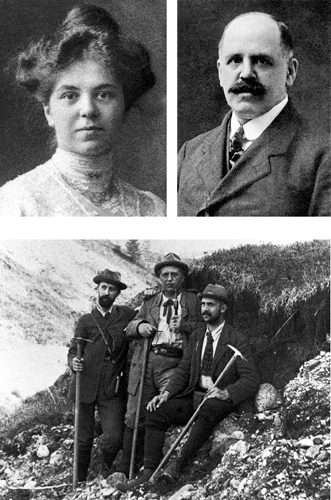
Children of an Aging Father. Top row: Catharina Maria Eunice Kuyper (left) proved the most difficult of his three daughters for Kuyper to handle, while Jan Hendrik Frederik Kuyper (right) proved a grief in choosing Theosophy over Christianity in the East Indies. Above: Kuyper is accompanied by sons Herman Huber Kuyper (left) and Abraham Kuyper Jr. (right) on one of his annual mountaineering expeditions.
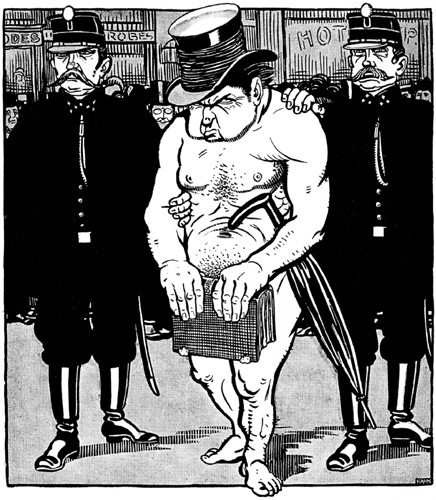
“A New Role.” Albert Hahn relished the chance to caricature Kuyper’s embarrassing encounter with the Brussels police. Although observers did complain about his (unintentionally) conducting his nude exercise regimen in public view, Kuyper was not hauled off to the police station as the cartoon suggests. Hahn does, however, capture Kuyper’s chagrin over the situation.
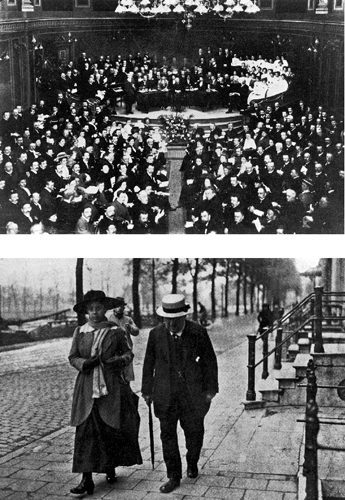
Nearing the End. In his last decade, Kuyper oscillated between two roles. Above, the elderly chieftain is honored in April 1912 on the fortieth anniversary of the founding of De Standaard. The 75-year-old Kuyper (center on the dais) was still the editor in charge of the paper, making his voice heard throughout the land. He also observed a strict private regimen, including long daily walks around The Hague; below, with daughter Johanna.

Funeral for a Man between the Times. Above, Kuyper’s coffin is carried out of his house to the horse-drawn hearse that will take him to the cemetery. Below, the long cortege passes down a street crowded with mourners, and with The Hague’s electric trams. The traditional format and the icons of the modern world provided a fitting close to Kuyper’s life and work.